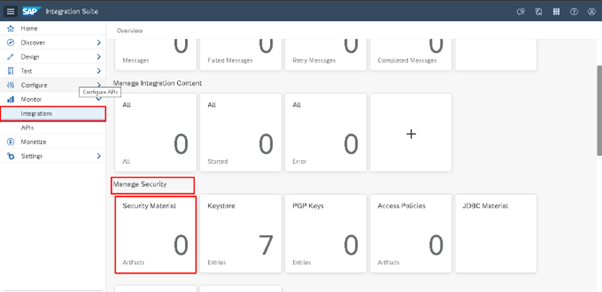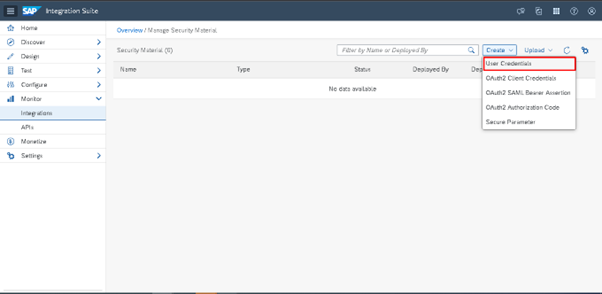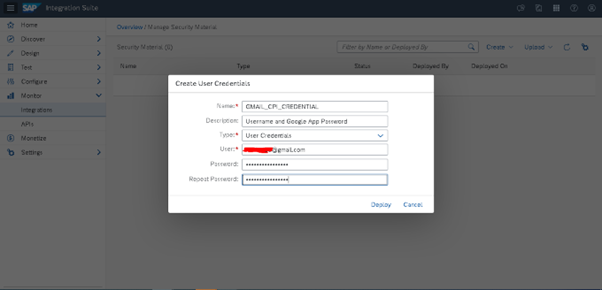A cloud-based middleware called SAP Cloud Platform Integration (CPI) links our SAP ERP systems with third-party products such as cloud-based, on-premises, SAP, or non-SAP applications. Real-time data interchange between these systems is made possible by cloud services.
What is SAP Cloud Platform Integration (CPI)?
Developed by SAP SE, SAP Cloud Platform (SCP) is a platform as a service for building new applications or extending existing ones in a secure cloud computing environment under SAP’s management. Building and implementing cloud-native apps across several platforms, including Salesforce, SAP ERP, Oracle, and Dynamics, is a component of cloud computing. It’s made to combine both on-premises and cloud-based applications.
How can SAP CPI help your business?
SAP CPI can benefit your company in several ways. It can give team members access to the business information they need for their daily tasks, enabling them to use their better judgement to make decisions that are best for the team.
It offers a collection of tools and programs that enable you to complete end-to-end tasks for integrated content access and editing, packaging, and publishing.
It also explains which organizational data should be protected, where it should be stored, who should have access to it (and when), and how it should be used.
Benefits of Cloud Platform Integration (CPI)
CPI has several significant benefits that make it a potent integration solution for enterprises. Listed below are a few of the benefits:
1. It is an extremely safe and dependable enterprise-grade integration solution. It offers real-time data synchronization and guarantees secure and accurate data transport between various platforms.
2. It is an extremely scalable integration platform that makes it simple to combine both on-premises and cloud-based apps. Additionally, it offers a wide range of capabilities like analytics, process orchestration, and data transformation.
3. It is an affordable option that is simple to integrate with current systems. Additionally, it is simple to use and needs little maintenance and guidance. For businesses looking to instantly and easily integrate their applications and processes, it is the perfect solution.
4. It provides a wide range of support options, such as online tutorials, user forums, and customer support. This makes it easier for businesses to get the most out of their integration solution.
5. You may take full use of cloud solutions because it adapts readily to the behavior of your business requirements.
Overview of cloud computing and A2A middleware
A2A middleware and cloud computing are two of the most crucial technologies for companies today. Cloud computing offers an affordable and effective solution to store, manage, and process enormous volumes of data while allowing organizations to rapidly and easily access data from anywhere in the globe.
A sort of middleware called application-to-application (A2A) middleware allows two or more apps to communicate with one another. It is an essential part of cloud computing and offers a safe and dependable mechanism to transfer data between various computers. Another affordable option that requires little maintenance and training is A2A middleware.
How to leverage CPI to maximise the benefits of A2A middleware and cloud computing
Businesses may simply integrate CPI’s robust integration solution with cloud computing and A2A middleware. Businesses may manage the data transmission between various systems and integrate their apps and processes fast and effectively by utilising CPI. This makes it possible for companies to profit from the cost-savings, scalability, and reliability that come with cloud computing and A2A middleware.
A strong integration solution, CPI offers a wide range of functions. Businesses may rapidly and simply integrate their applications and processes due to the data translation, process orchestration, and analytics that are provided by this technology. In addition, CPI is a highly trustworthy and secure integration platform that makes sure data is moved between systems accurately and securely.
Advantages of using CPI for cloud computing and A2A middleware
There are several advantages of using CPI for cloud computing and A2A middleware.
• It is a cost-effective solution that requires minimal maintenance and training.
• It is a highly secure and reliable integration platform that ensures data is accurately and securely transferred between different systems.
• It is a highly scalable integration platform that can easily integrate both cloud-based and on-premises applications.
Steps for setting up CPI for cloud computing and A2A middleware.
It is not too difficult to set up CPI for cloud computing with A2A middleware. Installing the CPI platform comes first, followed by creating an account on the SAP Cloud Platform. The next step is to construct the integration flows that are required, including the data transformation, process orchestration, and analytics flows.
You must set up the CPI platform to connect to the cloud computing and A2A middleware systems after the integration flows have been built. Setting up the required connection parameters, such as the authentication and authorisation parameters, is required for this.
To guarantee that the data is being transported accurately and securely between the various systems, you must activate the integration flows and test them. Following testing and approval of the integration flows.
Step 1(Setup Credential in CPI):
Expand the “Monitor” option in the left side panel on the Overview page of your SAP Cloud Platform Integration and click Integration section, as illustrated in the figure below. Choose the “Security Material” tile from Manage Security Section next.

Step 2:
Choose “Create” and then click on “User Credentials” on the “Manage Security Material” screen, as shown in the picture below.

Step 3:
I’ve typed the name “GMAIL CPI CREDENTIAL” into the “Create User Credentials” section. Choose “User Credentials” as the Type after entering the Description. At the “User:” textbox, type your whole Gmail username.
In the textboxes labelled “Password:” and “Repeat Password:” paste the 16-character App Password that was generated by Google Security and click on deploy.

Step 4(Import Google Certificates):
The Google SMTP server can now verify its identity using SAP Cloud Platform Integration thanks to this step.
Click “Monitor” option on the Overview page for your SAP Cloud Platform Integration, and then click the “Connectivity Tests” tile that is listed under the “Manage Security” section. Click “SMTP” on the “Test Connection” tab and enter the information as indicated in the figure below. Make sure the “Credential Name” matches what you previously specified on the “Manage Security Material” page. After that, click “Submit,” and you ought to receive a green success message. To download the certificates onto your computer, click the “Download” icon button.
Next, once the certificate file is on your computer, unzip it.



Step 5 (Install the certificates on CPI):
Click “Monitor” option on the Overview page for your SAP Cloud Platform Integration, and then click the “Key store” tile that is listed under the “Manage Security” section.

Click “Add” and then select “Certificate” on the “Manage Key store” screen, as shown in the picture below.

Enter the “Alias” of your choice (in my instance, “Gmail Certs”) in the “Add Certificate” tab. Click “Add” after browsing the certificate from your computer.


As seen in the image below, repeat the second certificate’s addition.

After finished, two new entries will appear in the ‘Manage Keystore’ section. As seen in the figure below, they are “gmail certs” and “smpt certs” in my situation.

Step 6 (Create and Deploy the Integration Flow):
You may now design and implement the iFlow.
Here is my test-only, basic iFlow.


To edit the integration flow, select Edit.
To open the Property Sheet, select Restore in the bottom right corner. You define the settings for each step in the integration flow on the property sheet.




Examples of successful integration of CPI
For an example, our organization used SAP Cloud Platform Integration for triggering automated mail processes, such as sending out invoices to customers or approving orders and this enabled us to eliminate manual processes, reduce errors, and increase productivity. And also, for connecting our SAP S/4HANA system to an external CRM system. This integration allows us to automatically synchronize customer data between the two systems, ensuring timely updates of customer information.
Conclusion
With the help of the robust cloud platform integration, Enterprise applications may easily interact with Gmail and other external services, enabling smooth communication quickly and efficiently and integration between various systems. Furthermore, CPI is a trustworthy integration platform that guarantees accurate and safe data transfer between various platforms.
